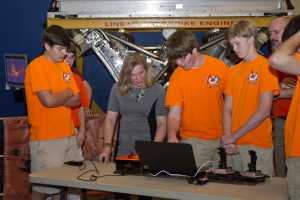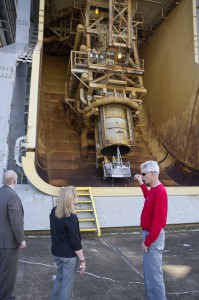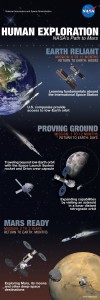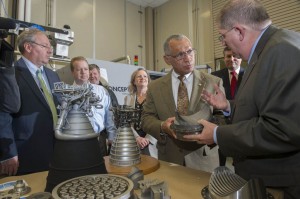Last week I had the opportunity to visit NASA’s Stennis Space Center in Mississippi for the first time. I was excited to meet some of the amazing women and men who have made Stennis one of the highest ranked facilities in the Partnership for Public Service’s Best Places To Work in the Federal Government ® rankings for the past two years in a row.
Before I met with the Stennis workforce, my visit began with an outreach event at the INFINITY Science Center with nearly 150 students from the local area. For a moment it looked like my flight might be canceled due to weather, but thankfully I managed to get to the science center just a little after the event was scheduled to begin. I was so excited to meet with these students and talk to them about NASA’s exploration of our universe, our sun, and our solar system. I also spoke with them about NASA’s Earth science program, including research taking place at Stennis to better understand the local area.

Dr. Stofan participating in FIRST Robotics demonstration with members of the Gulfport High School Robotics Team (Gulfport, MS)
One of Stennis’ specialties is what we at NASA call applied science. The goal of applied science is to use NASA expertise to solve real-world problems. Through applied science, NASA works on the front lines of science and engineering to make a meaningful, beneficial impact on the world. We conduct scientific research, create new tools for monitoring the environment, and generate information to help communities around the globe understand and protect the natural world around them.
For example, in 2007, NASA formed the Gulf of Mexico Initiative to help the Gulf region recover from the devastating hurricanes of 2005 and to address other issues such as water quality, wetland conservation, and more. NASA expertise – centered at the Stennis Space Center – has helped the Gulf region respond to disasters such as the Deepwater Horizon oil spill, tornadoes and flooding. Researchers from Stennis use information from satellites, aircraft and other tools to observe forests, marshes, and barrier islands along the Gulf. They study this information to detect threats to wildlife habitats, and to look at ways to conserve and restore these habitats for the animals that need them.
My visit to Stennis was part of a series of visits I have been making to all of the NASA centers since I became chief scientist last year. At each center I have had opportunities to meet with early career researchers and have toured dozens of laboratories and test facilities. These visits are very important to me because science at NASA is distributed so widely across all of our centers, and it is almost impossible to comprehend the shear breadth of it. Having face-to-face conversations and behind-the-scenes access to science at our centers is the best way for me to get a clear understanding and appreciation of the results and the impact of NASA’s science investments.

Next time you are in southern Mississippi, be sure to pay a visit to the INFINITY Science Center and the Stennis Space Center. You won’t be disappointed!
The author is NASA’s Chief Scientist.


